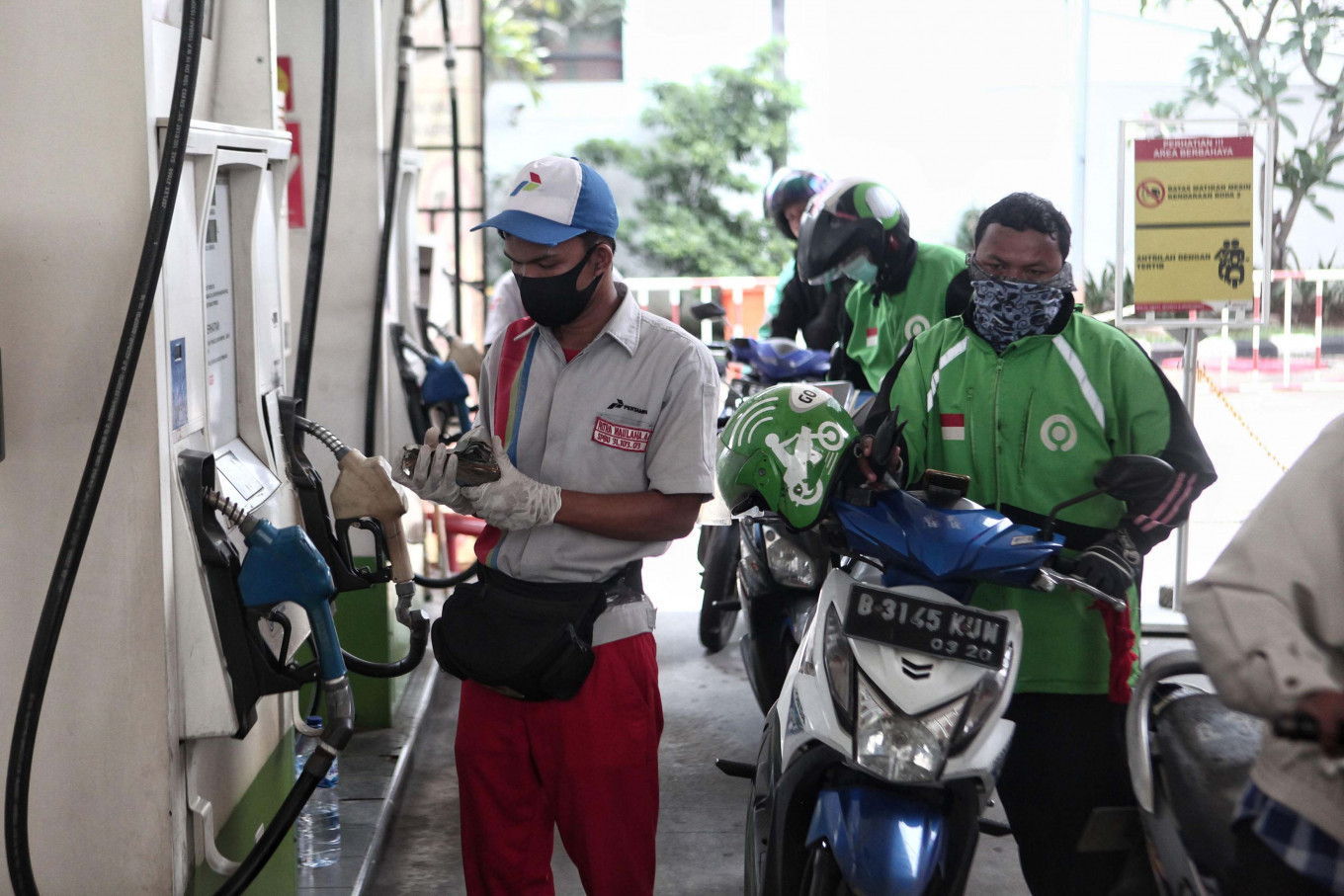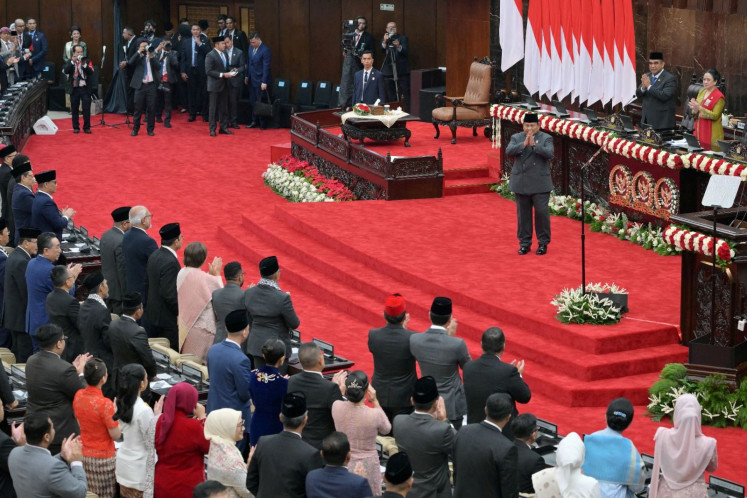Popular Reads
Top Results
Can't find what you're looking for?
View all search resultsPopular Reads
Top Results
Can't find what you're looking for?
View all search resultsFully floating fuel price
We suggest that the pricing mechanism for subsidized fuels as Pertalite also be redesigned in a way that gradually brings fuels closer to market prices.
Change text size
Gift Premium Articles
to Anyone
 Online motorcycle-taxi drivers refuel at Cikini gas station, Jakarta, on April 14, 2020. To alleviate the impact of PSBB due to COVID-19, Pertamina disbursed funds amounting to Rp 13.5 billion (US$864,371.96) in the form of 50-percent cashback to a maximum of Rp 15,000 for 10,000 motorbike riders online to purchase Pertalite, Pertamax and Pertamax Turbo with the MyPertamina application. (JP/Seto Wardhana )
Online motorcycle-taxi drivers refuel at Cikini gas station, Jakarta, on April 14, 2020. To alleviate the impact of PSBB due to COVID-19, Pertamina disbursed funds amounting to Rp 13.5 billion (US$864,371.96) in the form of 50-percent cashback to a maximum of Rp 15,000 for 10,000 motorbike riders online to purchase Pertalite, Pertamax and Pertamax Turbo with the MyPertamina application. (JP/Seto Wardhana )
W
e were dumbfounded to learn that the government still subsidizes the price of gasoline of RON92 and higher qualities which are used by middle and high-income consumers. We had thought that high-octane fuels such as Pertamax had been fully floated on the market prices since early September when the government raised the prices of subsidized low-octane gasoline to cut energy subsidy expenditures.
Subsidizing the fuel consumption of the middle and high-income people not only is a blatant waste of taxpayers’ money but also insults the people’s sense of justice because the country still imports 60 percent of its fuel needs and the government has steadily suffered a fiscal deficit. In fact, energy subsidies this year are estimated at about 20 percent of total government spending.
It was State Enterprises Minister Erick Thohir who awakened us to that misguided fuel pricing policy when he revealed last week that he would propose that the state-owned oil monopoly Pertamina fully float the prices of non-subsidized fuels on a weekly, not on a monthly, basis.
We don’t see any bureaucratic or technical barriers for Pertamina to weekly set Pertamax and other high-octane fuels fully on the market prices as other oil companies in the country have been doing.
In fact, the government had launched a floating price mechanism in early 2002, setting domestic fuel prices monthly on the price levels in Singapore. But that floating price mechanism lasted only for one year when the international oil prices remained fairly stable, thereby making the monthly price adjustment quite incremental, politically accepted and economically feasible.
Then President Megawati Soekarnoputri abandoned that floating price mechanism in 2003 when the international oil prices began to rise significantly due to the looming United States attack on major oil producer Iraq and the oil worker strike in Venezuela. She also thought that by subsidizing the fuel price stable below the international prices she would get full support from the people in the presidential elections in early 2004. But she lost anyway.
We suggest that the pricing mechanism for subsidized fuels as Pertalite also be redesigned in a way that gradually brings fuels closer to market prices but still reduces exposure to price shocks. When the subsidized fuel prices are gradually closer to international market levels due to the global economic slowdown the government may put fuel prices on a managed float mechanism where prices will adjust according to market rates.
It would still serve as a managed float, not a free-float system because the mechanism is still tied to fixed ceiling prices whereby the government can intervene in retail fuel prices again if international oil prices increase dramatically. Or the government can choose a fixed-subsidy scheme whereby the fixed rupiah amount of fuel subsidy per liter will remain irrespective of the eventual oil market price developments and rupiah rate movements.
Under this regime, the amount of fuel subsidy per liter will not fluctuate along with the oil market prices or rupiah rate quotations because it will be the fixed price of the subsidized fuel that has to rise or fall monthly following the oil-market quotations.










